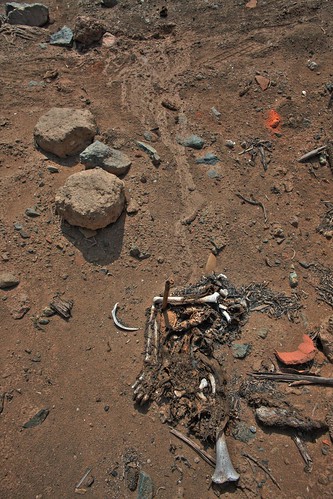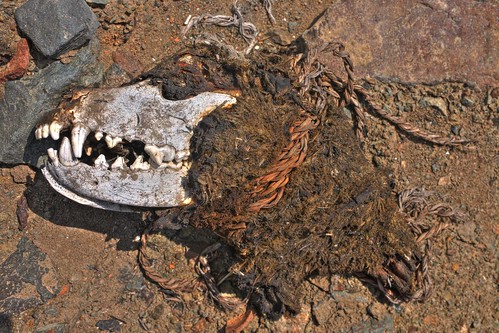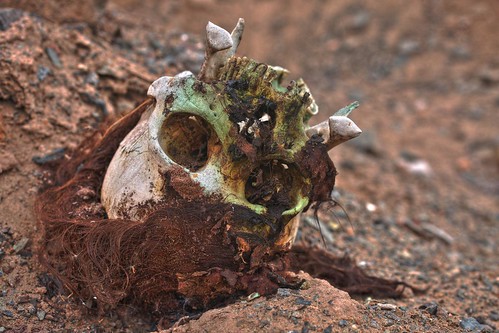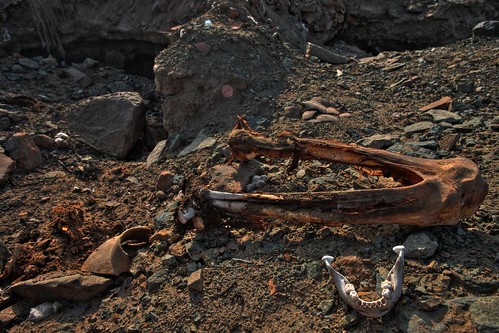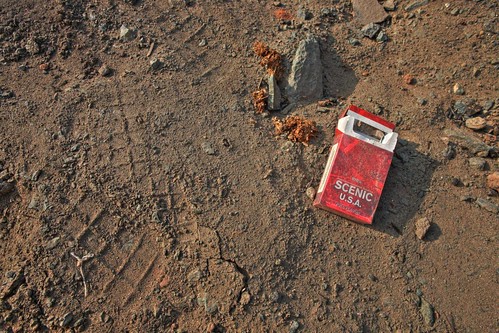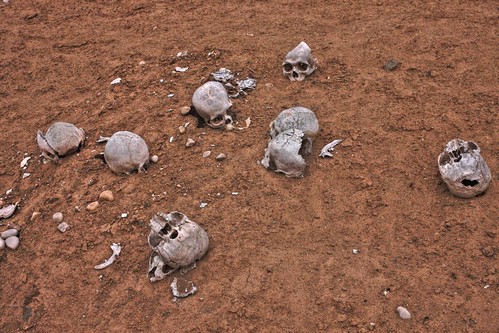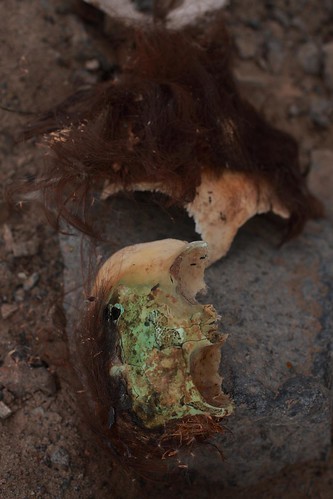

Looting at a site near Eniminga, Huaura Valley. Left, you can appreciate adobe walls that are plastered and painted yellow. These are heavily disturbed by numerous pits dug with shovels. Their exposure will contribute to their rapid destruction.
Above, part of a human burial. The looting was relatively recent, since the bone still has flesh on it. There is a small piece of basketry mixed in, probably a grave good that accompanied this person.
Photos by Margaret Brown Vega, 2010.











